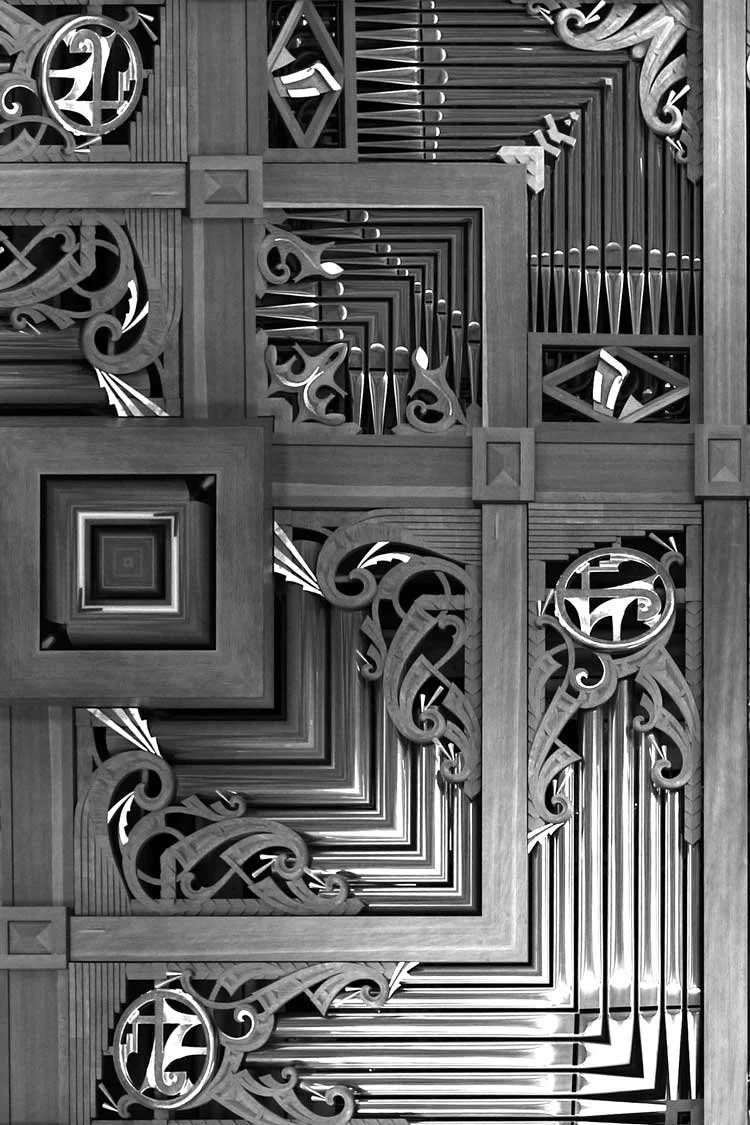“The Organ” Part Two: The Living Instrument
Wednesday, July 9, 2025
written by Dr. Ilona Kubiaczyk-Adler
Photo credit: Jacob Adler
Last week, Pastor Erik wrote a beautiful blog about shifting perspectives and the influence music has on his connection with God. In it, he mentioned my husband Jacob Adler's recent movie about our Pinnacle Sanctuary organ op. 14 by Richards, Fowkes & Co., entitled "The Organ." You can watch it here. The fantastic questions from those who attended the viewing after worship last Sunday inspired me to share more about this instrument and why we chose to document my relationship with it.
Our Sanctuary organ is one of the highest quality instruments in the Southwest, recognized nationally. I regularly host visiting organists from around the country, and my inbox overflows with concert organists inquiring to perform in our Pinnacle Concert Series. What makes it so special? Its historically informed construction follows the best sound ideals from 17th and 18th century North Germany and the Netherlands. Built according to old practices—handmade rather than machine-made—it's almost fully mechanical.
This mechanical action creates a direct line from our fingers through the keys and wooden connectors to the pipes, giving organists complete control over how sound is produced from the moment we depress a key until we release it. Only two electrical components exist: the stop action for easy sound changes, and the motor fan for a steady wind supply. In the old days, you needed a helper to pump the bellows—now you just flip a switch.
With roughly 3,400 pipes, three floors filled with wind channels, wind chests, rollers, trackers, a whole separate room with 4 large bellows, and then due to the regular use of the organ in worship, concerts, and recordings - its maintenance is constant. My organ scholars and I regularly dust things off, vacuum, tighten screws, reglue connectors, and fix other minor issues. We also tune about 700 pipes every other month, while its builders handle the rest annually. Desert climate affects the organ—sudden humidity changes and extreme dryness require both humidifiers and dehumidifiers inside the instrument. I monitor humidity levels daily through sensors connected to an app on my phone.
Through years of this careful tending, I've discovered something profound: this instrument has become more than a machine. It breathes, responds, sometimes protests—acting almost as a living being that requires daily attention and care. When I play, check its sound, tuning and “lung” health, and when I address its needs, we enter into a conversation. The organ doesn't simply respond to my touch; it collaborates, offering its own voice to shape the music we create together.
This intimate partnership between human and instrument captured Jacob's imagination. As we celebrate the organ's 20th anniversary in January 2026, our film explores this relationship—how caring for something with devotion transforms both the caretaker and the cared for. In the end, we don't just play the organ; we commune with it, creating something greater than either could achieve alone.

